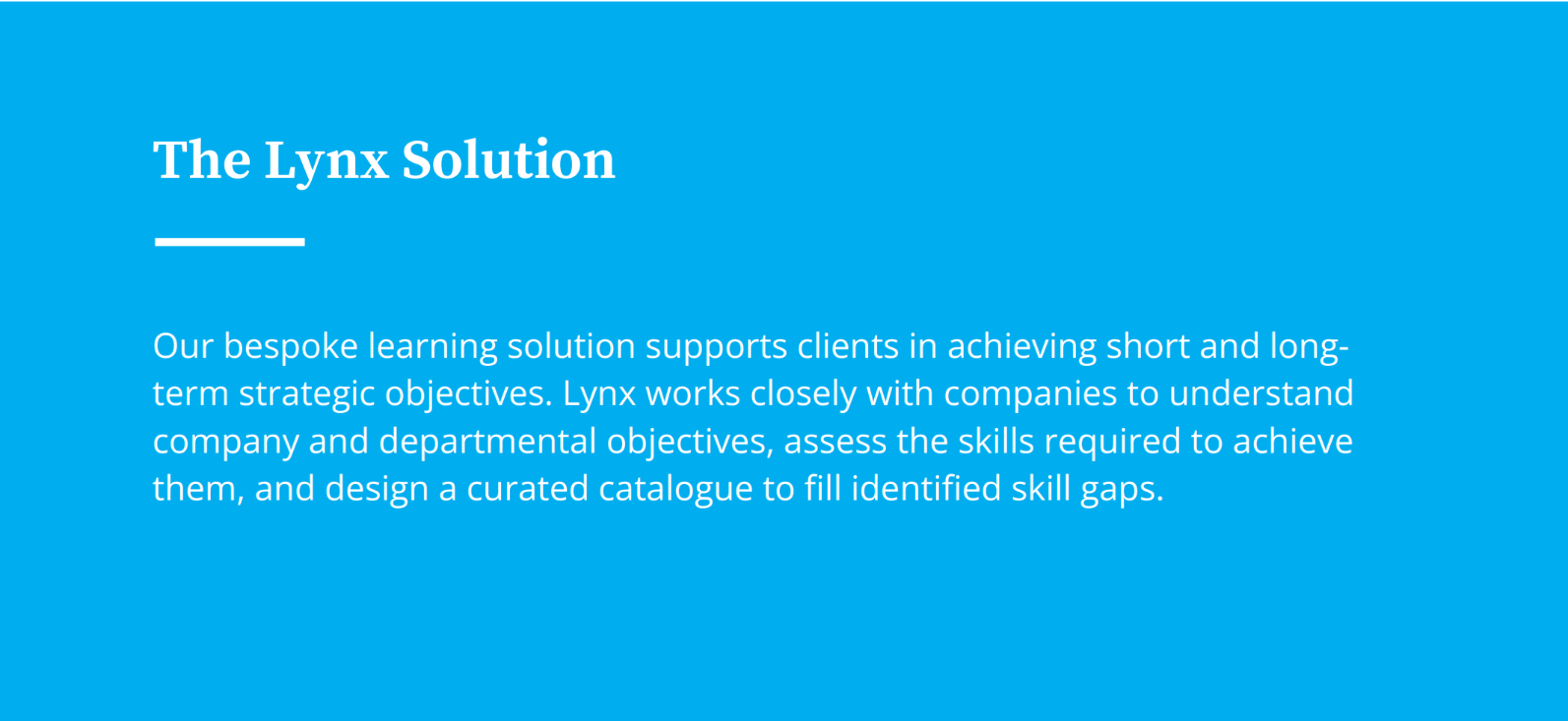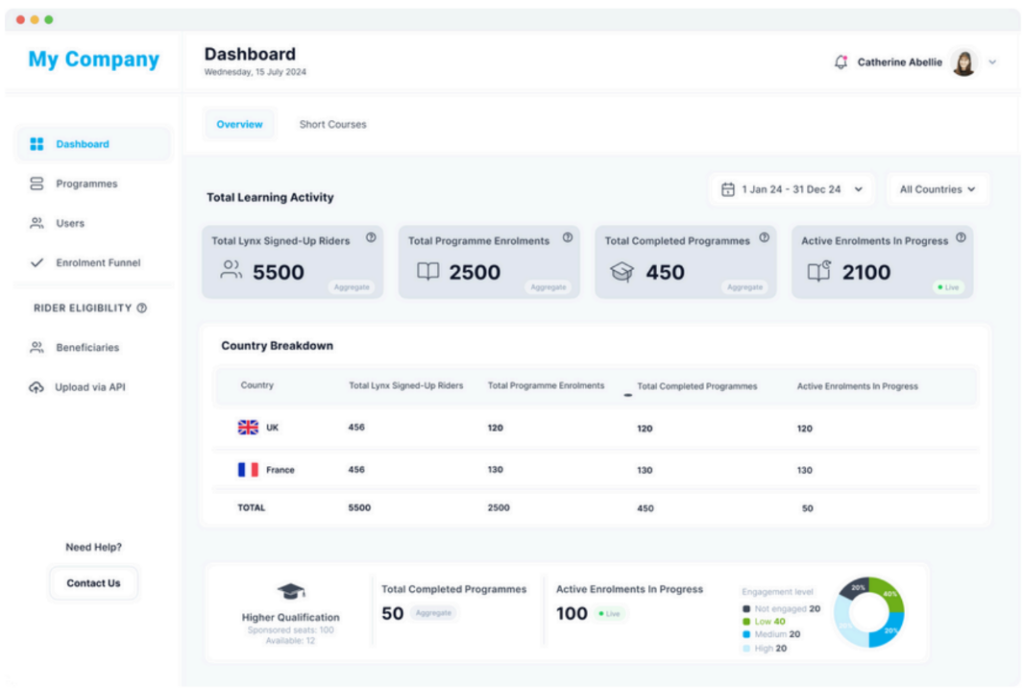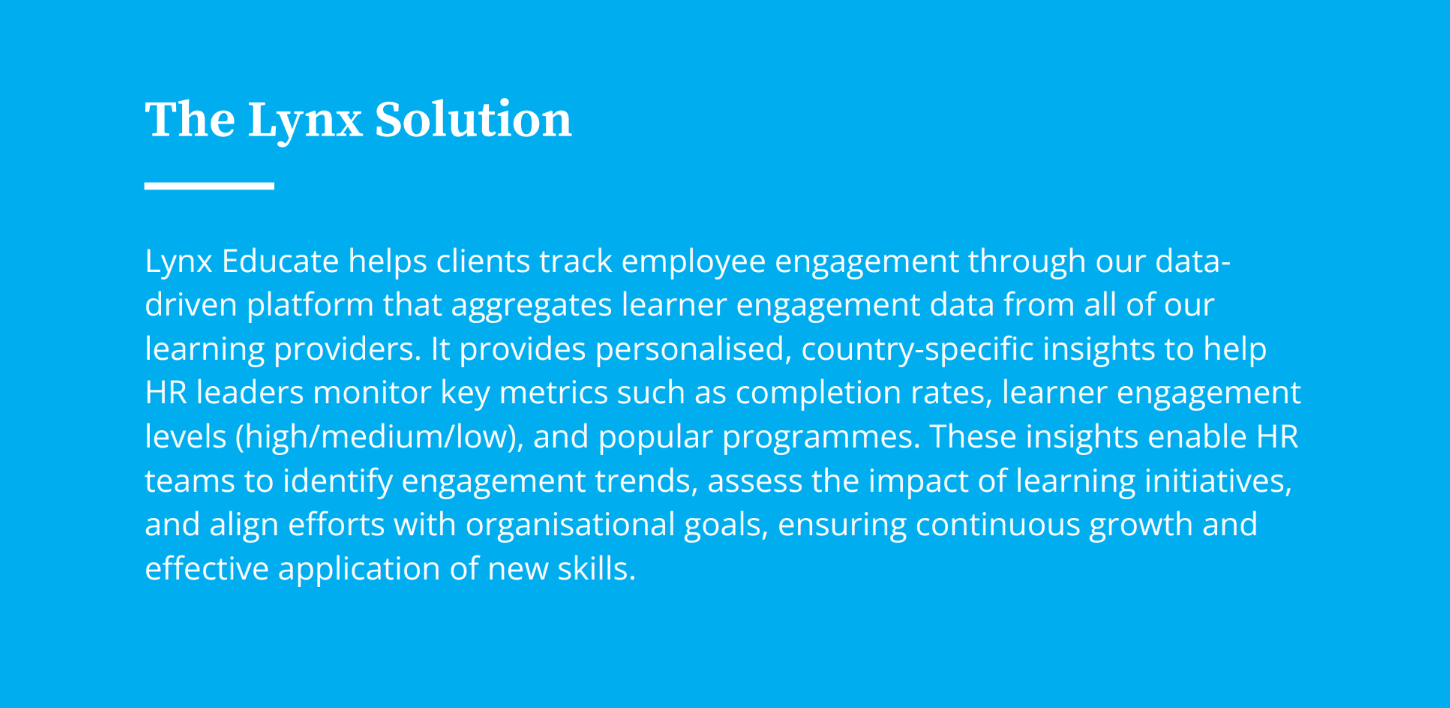If you’re looking for a strategic roadmap to build a future-ready team, look no further for workforce upskilling.
Upskilling is not just an investment in your workforce—it’s an investment in the future of your business. In a world of constant change, the ability to learn and adapt is the ultimate competitive advantage.
SYLVIE MILVERTON, LYNX CEO & CO-FOUNDER
Investing in learning doesn’t just bridge skill gaps; it drives engagement, improves retention, and accelerates business transformation. Yet, while 91% of leaders agree on the importance of upskilling, only 22% provide the necessary opportunities (Randstad Sourceright Talent Trends Report, 2020).
At Lynx Educate, we believe upskilling is a strategic advantage. By fostering a culture of continuous learning and equipping teams with real-world tools, companies build resilient, future-ready workforces.
Here’s how you can make upskilling a reality in your organization.
Step 1: Identify Future Skills
To future-proof your workforce, start by identifying the critical skills your company will need in the next 1-3 years. Align these with your strategic goals and collaborate with cross-functional leaders to define skill priorities at three levels:
a. Company-wide
Identify 3-5 essential skills supporting organizational goals. Example: A multinational company might prioritize language learning to enhance global collaboration.
b. Departmental
Focus on functional needs. Example: Hospitality businesses may emphasize service-oriented skills for front-of-house teams.
c. Individual
Tailor learning to roles and career aspirations, ensuring employees take ownership of their growth.
Fostering a culture of learning enhances innovation, strengthens company culture, and improves retention.

Step 2: Assess Current Skills
Once future skills are identified, establish a baseline of your team’s current skills. This step helps measure progress and identify gaps.
Use real-world projects and performance-based assessments to gauge employee capabilities. Track learning metrics and data analytics to gain insights into workforce development.

Step 3: Define Upskilling Goals
Based on insights from steps 1 and 2, set clear, actionable upskilling goals at the company, department, and individual levels. Research shows employees benefit from structured learning plans (Hastwell, 2023).
Example: If a customer service team struggles with response times, HR can focus on time management and de-escalation training, ensuring employees receive targeted support rather than broad, generic training.
Step 4: Map Learning to Skills
Once goals are set, design engaging learning experiences that blend different learning methods. Research suggests combining hands-on activities, coaching, and self-paced courses yields better results (Unitar, 2013).
Case Study: Language Upskilling
A multinational company partnered with Lynx Educate to address cross-campus communication challenges. Through our tailored language learning initiative powered by Voxy, employees improved their real-world English and cross-cultural communication skills, boosting collaboration, engagement, and productivity.
Step 5: Measure Upskilling Progress
Tracking progress ensures employees not only learn but also retain and apply new skills. Use data-driven dashboards to monitor engagement and completion rates. Leverage 1-1s with managers to discuss employee progress.


Step 6: Match Skills to Opportunities
Acquiring new skills is just the first step—applying them is what drives business impact. Connecting employees to relevant internal opportunities accelerates their career growth and improves retention.
For example, an employee who completes a workplace communication or management course might be well-suited for an internal leadership role.
Step 7: Communicate Metrics of Success
The final step in your upskilling strategy is proving its impact. Leaders with advanced upskilling initiatives report benefits like:
- Stronger company culture
- Higher employee engagement
- Increased innovation
- Improved talent retention
Studies show employees stay 41% longer at companies that prioritize internal hiring (LinkedIn, 2020). To communicate success, track and share key business metrics, including employee engagement, retention, time to productivity, and revenue growth.

Final Thoughts
Companies can prepare for the next 1-3 years by addressing the challenges ahead with a strategic upskilling plan. Upskilling doesn’t have to be complex—start by identifying 3-5 key skills with business leaders, gather feedback, and build from there. This step-by-step approach allows you to meet evolving business needs without overwhelm.
Consider upskilling a powerful opportunity to drive growth. As a leader, you’re in a prime position to foster this development.
Want to see how Lynx Educate helps companies like yours? Book a personalized L&D strategy call today.




